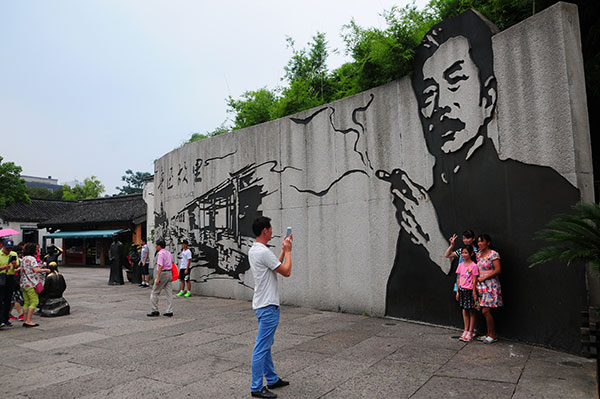
Lu Xun's Old Abode, the childhood residence of Chinese literary pioneer Lu Xun in Shaoxing, Zhejiang province, is a hot spot for Chinese tourists, especially parents who bring their children to inspire them.(Photo by Xing Yi/China Daily)
It was an overgrown lot. But it was also so much more.
Today, it's an immortal icon.
That's because it was integral to the early life of the late writer, Lu Xun, who's celebrated as China's foremost literary luminary in the early 20th century.
"There was a large garden in the rear of my house, and people call it the (Bai Cao) Hundred-Grass Garden ... Indeed, only some wild grass grew in it, but at that time it was my paradise."
So goes the opening prose of his essay From Bai Cao Garden to San Wei Study.
Chinese students today are required to recite this article about the writer's childhood in Zhejiang province's Shaoxing.
I recently visited the literary pioneer's childhood residence to see for myself the places I'd read about.
I made the 10-minute drive from the Crowne Plaza Shaoxing in the new development zone to the historical and historic part of town that hosts Lu Xun's old abode.
People endured extreme heat and humidity to stand in line to pose in front of a huge portrait of the man of letters painted at the entrance. It indeed depicts him in all his scruffy-haired, mustachioed, square-jawed glory, a cigarette clenched between his fingers.
Upon entering, I strolled along a cobblestone street flanked by a narrow canal. Black-tent boats bobbed languidly between two stone bridges.
Snippets of conversation that caught my ear as I wondered among old houses and parlors referenced characters from Lu Xun's works, such as Ah Q and Run Tu. Indeed, voices of people of all ages and accents speak in ways that give voice to the reality that Lu Xun remains an ingrained fixture in the Chinese consciousness.


















































